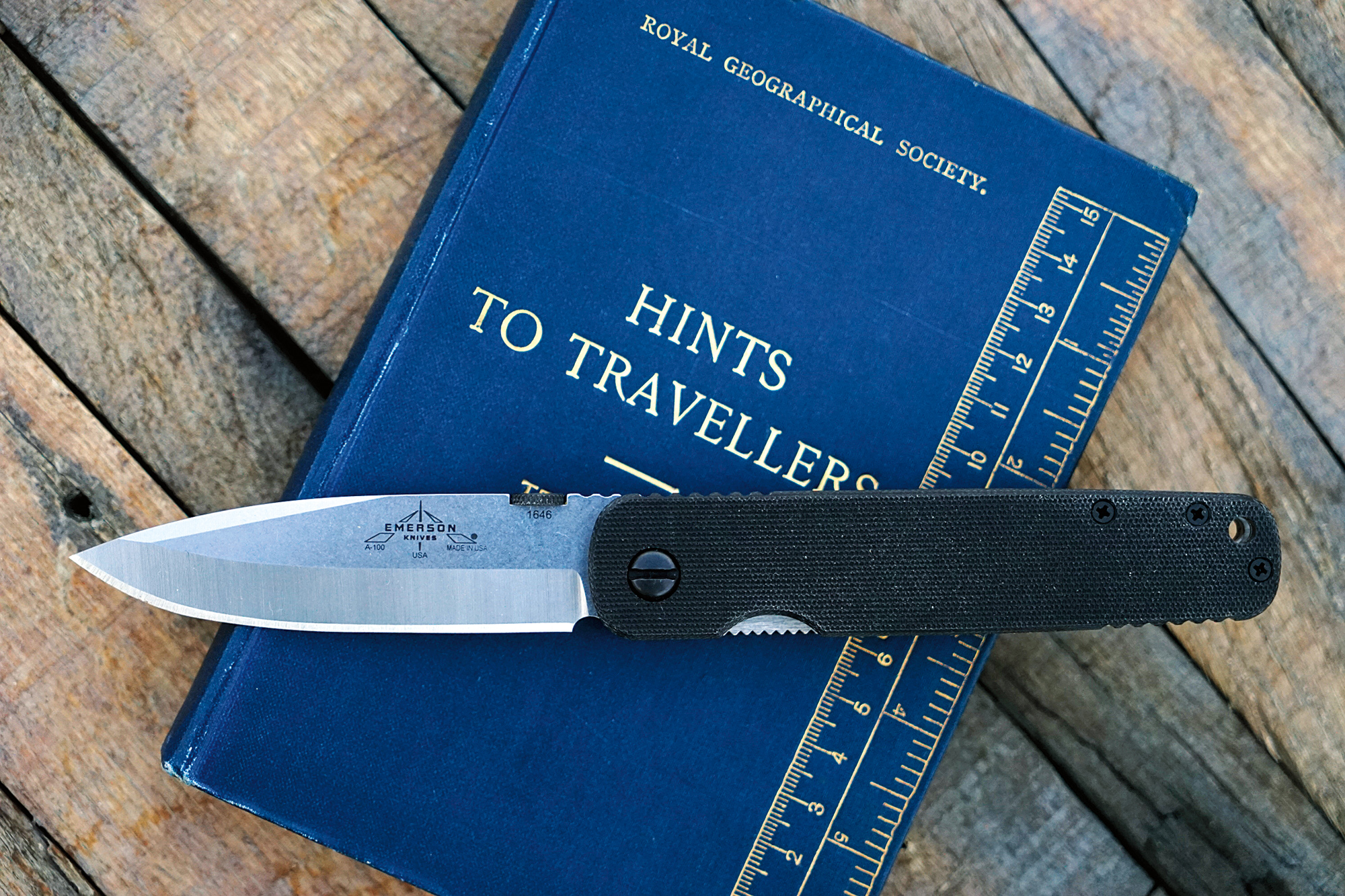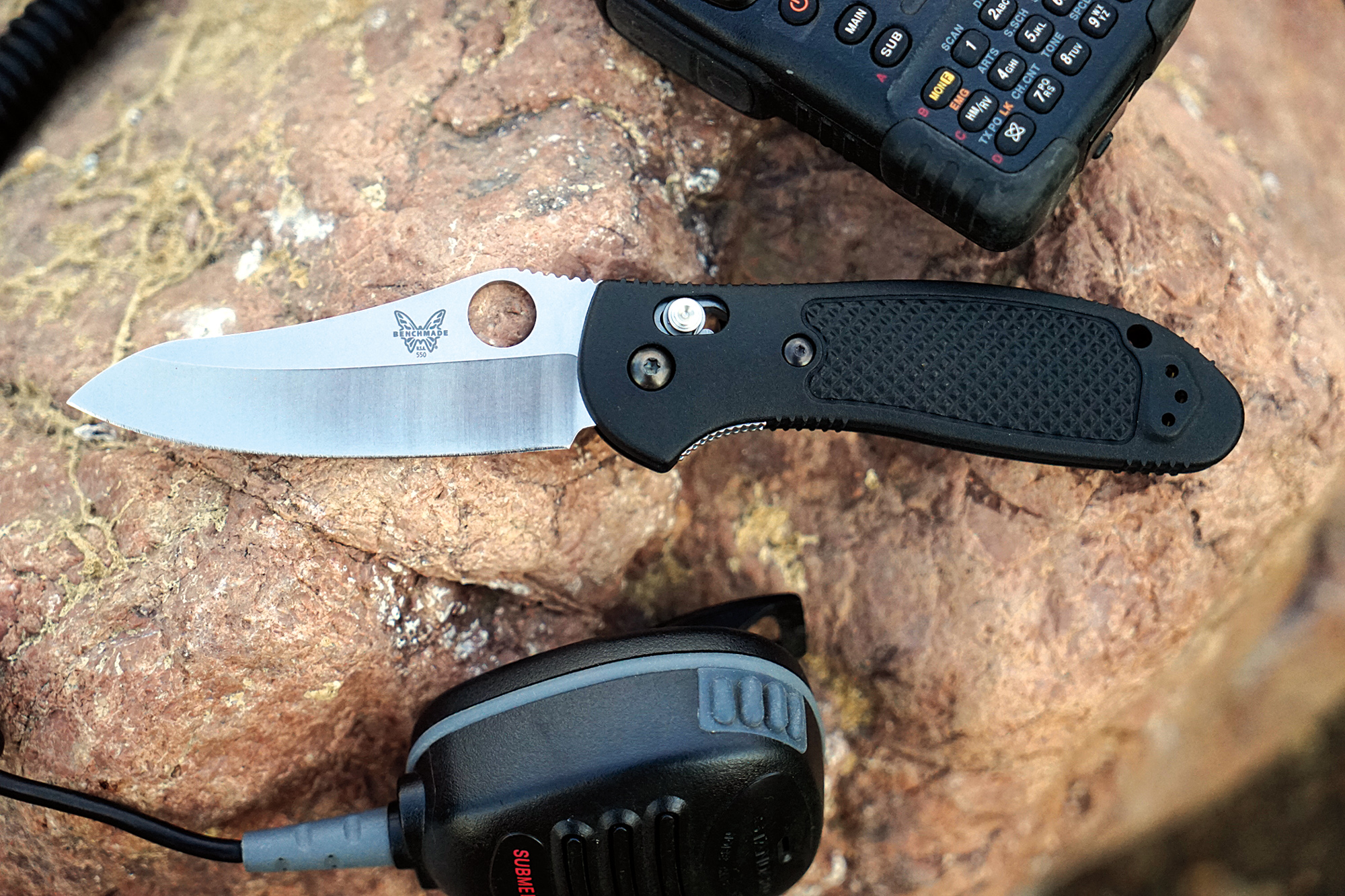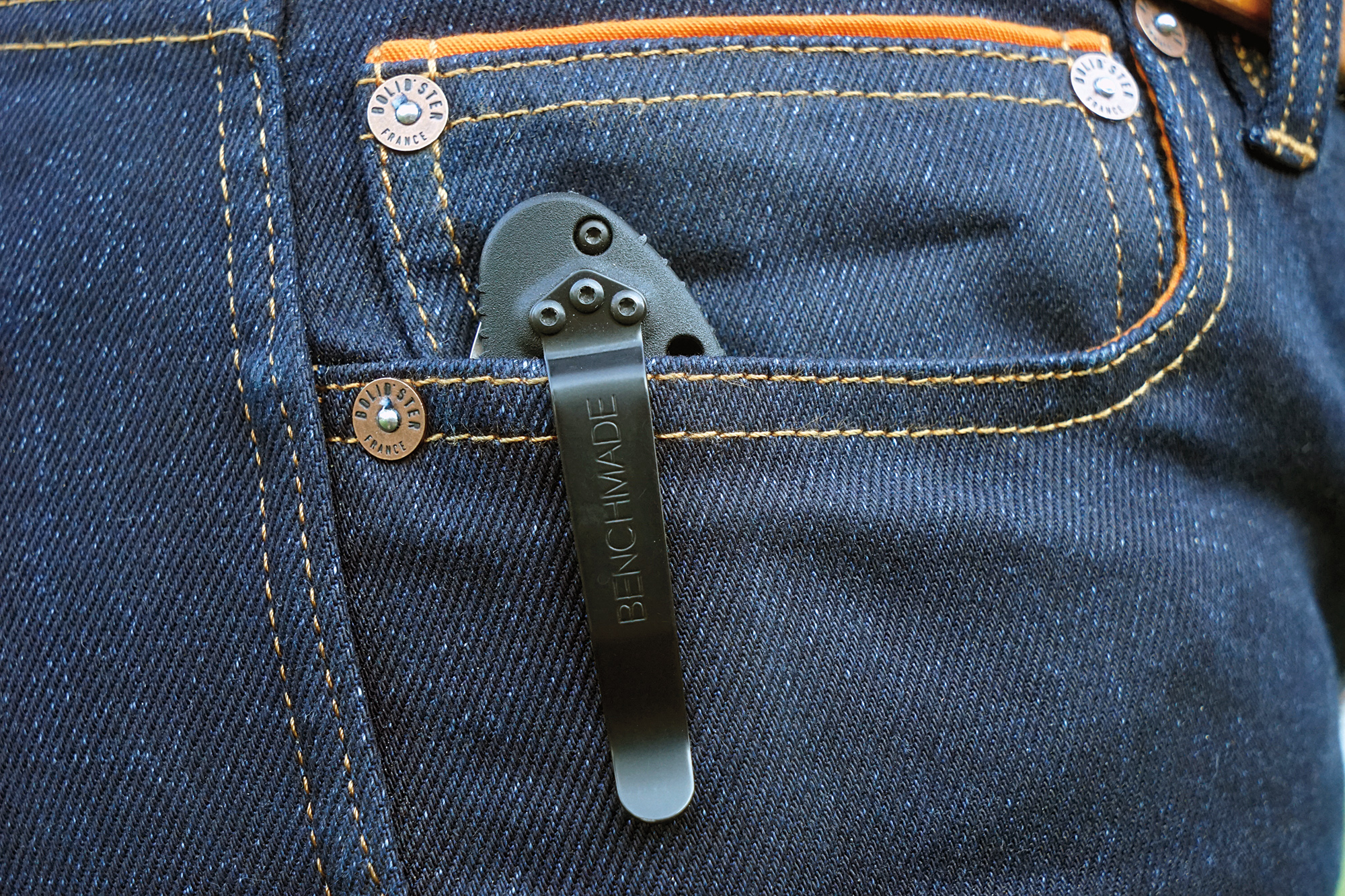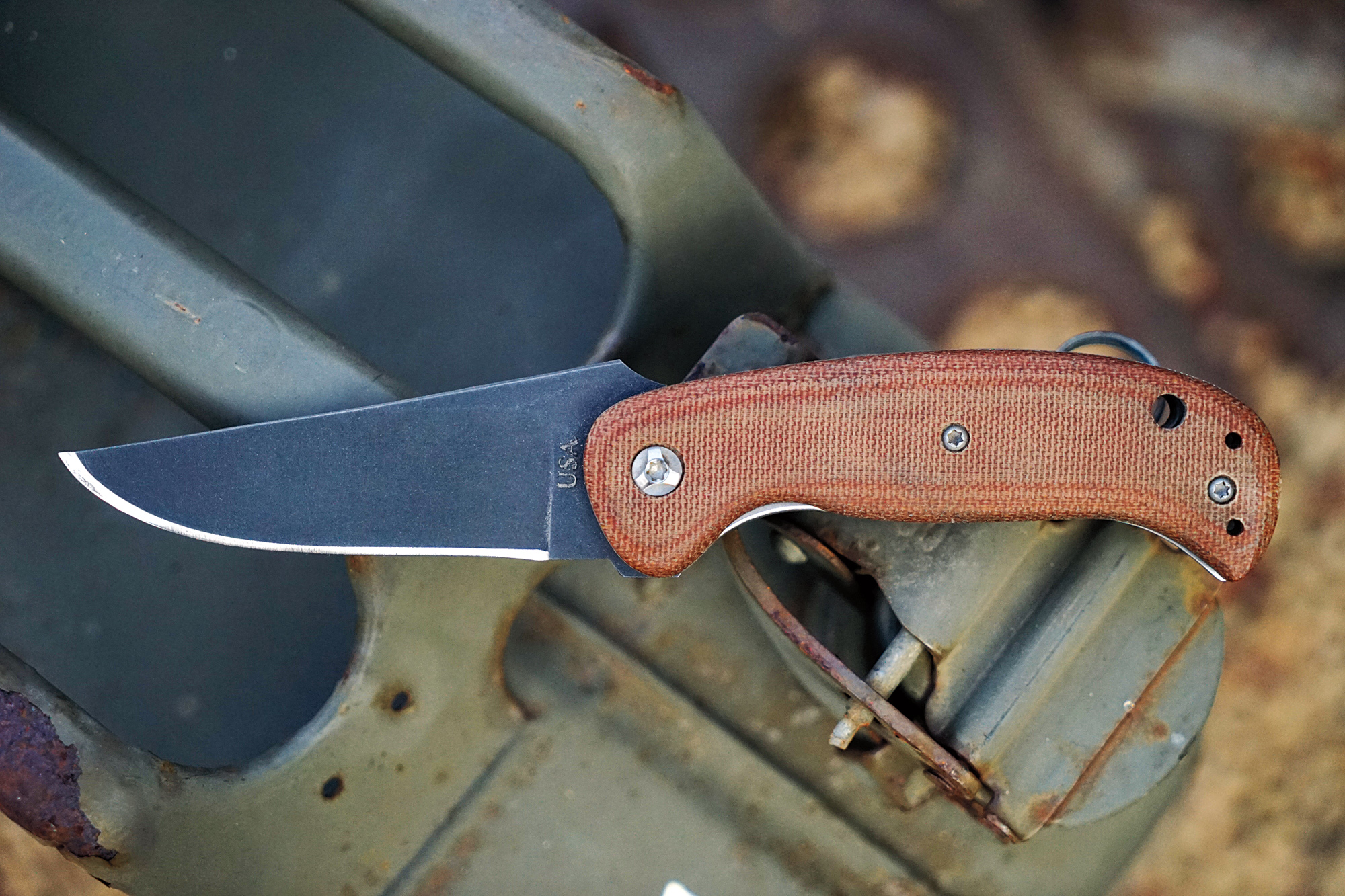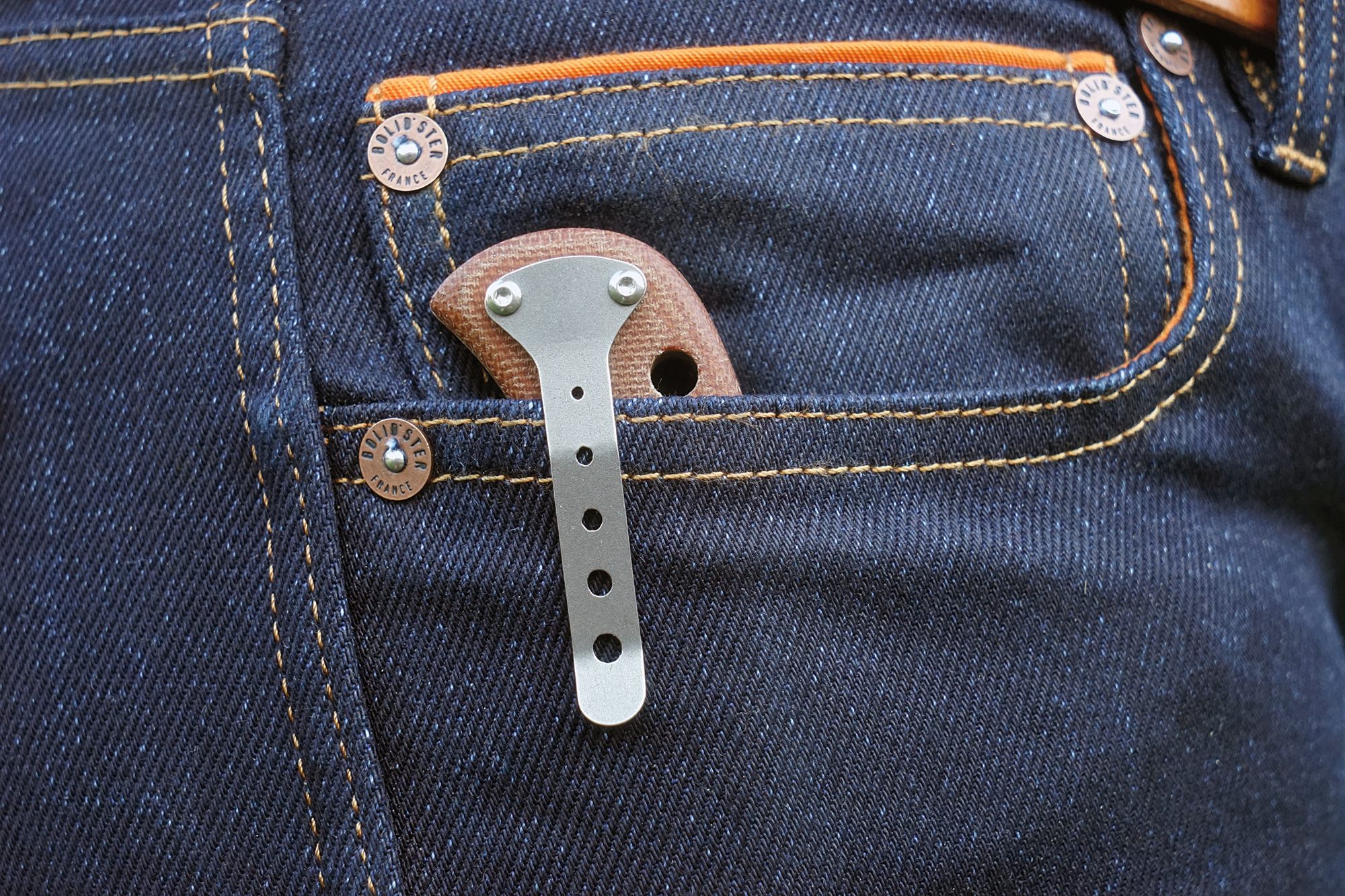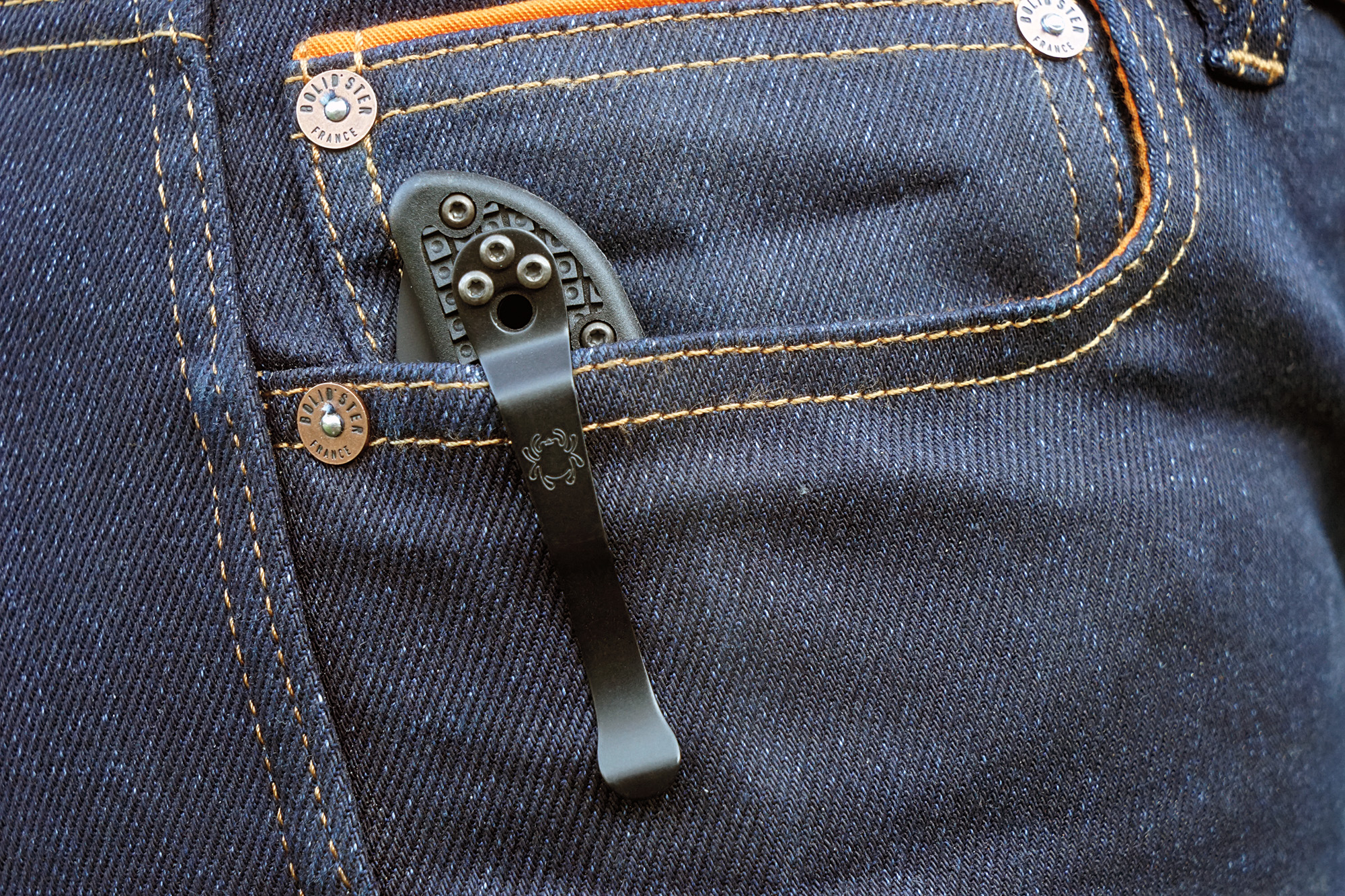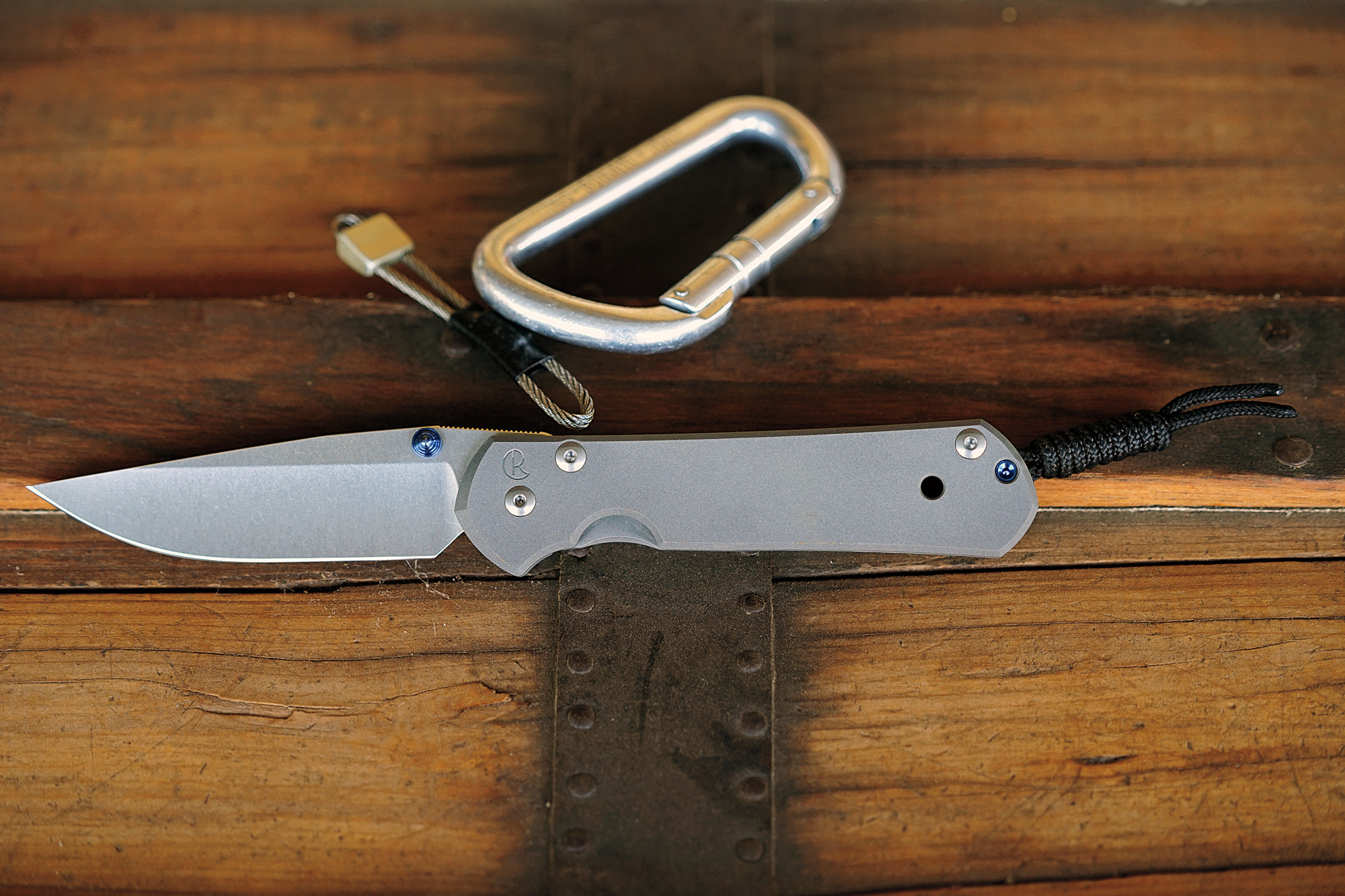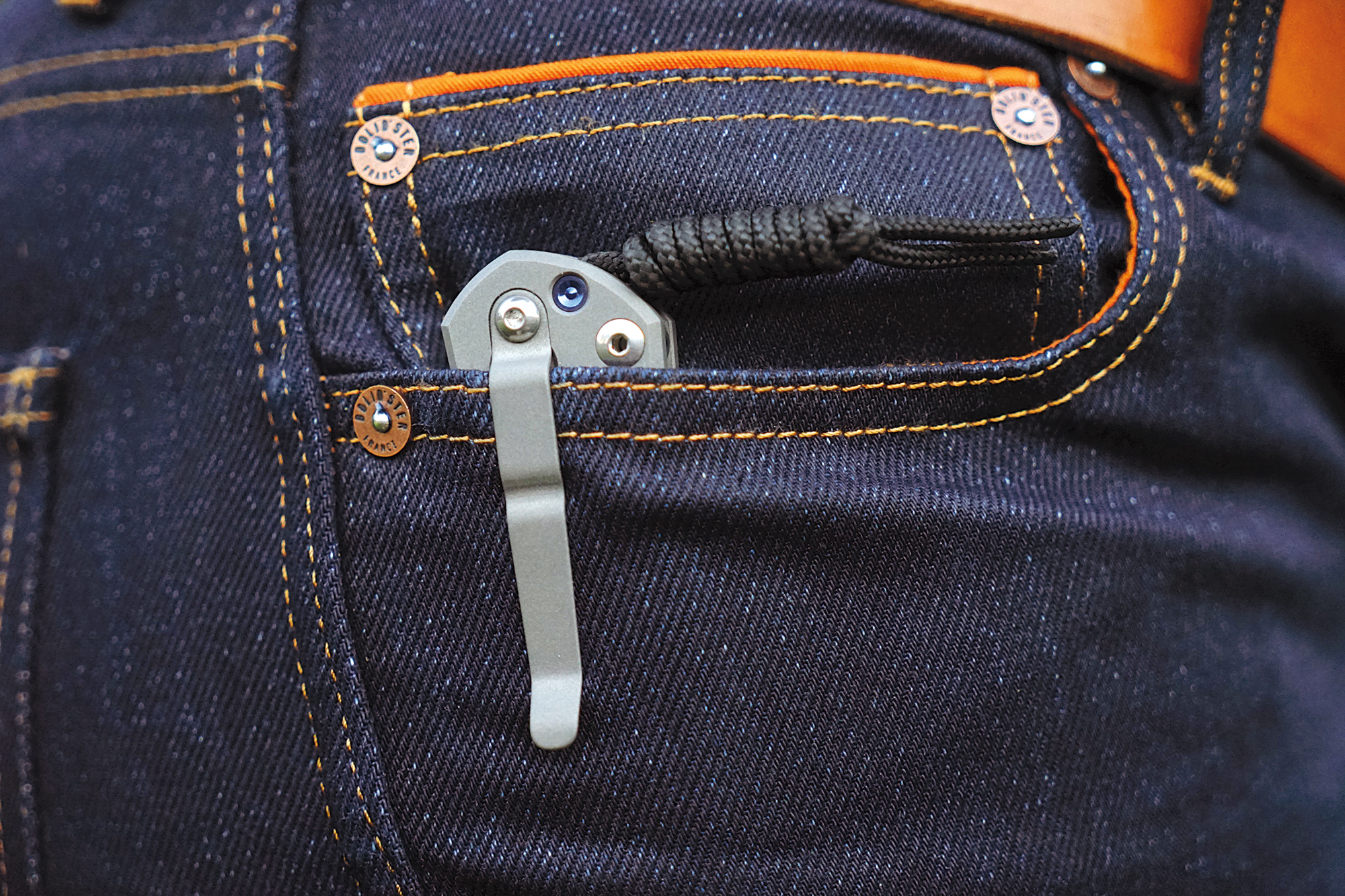Editor’s Note: This article was originally published in Overland Journal, Gear Guide 2019.
The archaeological record indicates that some humans were favoring stone blades—essentially any tool with two parallel edges longer than its width— by the Upper Palaeolithic period. Human culture evolved, as did blade and knife technology, and eventually transitioned in most instances from lithics to metallurgy.
We can generally define a knife as a blade with handles. The etymology of knife suggests linguistic usage in early northwest European written sources from at least 1,000 years ago. Knives remain important for everything from mundane tasks and menial chores to procuring and preparing food to defensive and offensive combative tools. There is no denying, knives still matter to modern humans.
We selected five Best of Breed pocketknives that secure, usually into a trouser pocket, with an integrated clip. We specifically chose knives with proven track records (and one maker with substantial credentials). We identified variants that are not too flashy if, for example, you had to display your pocket contents while crossing a land border. We also selected knives that cost under $500. We respect that budgets, usage, and gear procurement philosophies vary. Knives do get lost, confiscated, stolen, or ditched, so we stayed within a reasonable price range. Naturally, one should always be ready to lose a $120 knife, or even a $450 one.
The last criteria are not frequently discussed in Overland Journal, but are realities that exist, no matter how one philosophizes. We comment on a few gripping techniques that address a wide array of locking pocketknife applications. You also may wish to avoid inadvertently exhibiting an item with intrinsic value. You might travel through locales where, for legal, cultural, or other reasons, knife carry is prohibited or restricted. Therefore, we briefly note printing, or the extent to which each knife is visible through a covering garment—in this case, the front right pocket of a pair of Bolid’ster jeans.
EMERSON KNIVES
A-100
From humble knife-making beginnings, Ernest Emerson brought combative experience and innovation to his designs. An early configuration is his A-100. It’s reminiscent of a proof-ofconcept, possibly intended to evolve into something else. The knife exudes simplicity, and except for a few minor revisions, it hasn’t changed. A recessed, knurled disk on the blade spine serves as an ambidextrous thumb stud. The lanyard attachment comprises a hole drilled through the G-10 composite handle and the underlying locking and fixed interior liners (titanium and stainless steel, respectively). The liner lock is solid and has good resistance upon closure. The 3.6-inch drop point blade is made of proven 154CM stainless steel. The spine, from the thumb stud aft, has jimping to promote a saber grip. The blade has a common V grind, yet with a simple chisel edge. Essentially, one side of the cutting edge is beveled, but the other side is not ground. Examine traditional sushi chef knives. Usually, they are somewhere between a zero grind and a V. Honed only on one side (traditionally the right), they are incredibly sharp, strong, and easy to sharpen. This enduring edge convention is not typical in Western knife-making and has flummoxed some Emerson owners. The
A-100’s overall fit and finish are functional yet lackluster. Like other knives reviewed here, don’t expect to slice steak paper thin with this blade. It’s intended to be a working, if unapologetically combative, knife. The stonewashed blade (black Cerakote can be ordered) and glass fiber resin laminate handles are not presumptuous. The handles don’t necessarily look tactical, but they’re black. The thumb stud doesn’t hang on pockets, and most users should be able to manipulate the blade via thumb rotation, without flicking the wrist for inertial assistance. The A-100 clips into pocket tip up and can be ordered drilled and tapped for left-side carry. The blade can also be specified with a partially serrated edge. The G-10 handle is highly tactile and can abrade less-durable fabrics. When seated into pocket, the knife rides high relative to the clip’s attachment point on the handle, and the angular shape and thickness do make a more obvious print.
I liken the A-100 to a Land Rover Defender 110. It’s a timeless, workhorse design with legitimate credentials. Along with its pragmatic finish and angular lines, as analogous with the Land Rover, you’ll eventually need to do some field repairs. This is an aspect of Emerson ownership, and reverently, it’s not for everyone. For those who appreciate the idiosyncrasy that certain personal kit develops through use, and the co-reliance this fosters between owner and a maintained tool, you will grow fond of the A-100. And yes, this influential knife design did evolve. For many modern tactical folding knives, including the entire Emerson line, it is a genesis model from which many others developed. It’s made in the USA, with a sharpening service and lifetime warranty that doesn’t cover damage from use outside intended applications.
$205 | EMERSONKNIVES.COM
BENCHMADE
550 HG Griptilian
My father gave me a butterfly knife in the late 1970s, made by a little-known firm called Bali-Song. He knew the owner, Les de Asis, and let me specify the blade and handle design. That business is now part of Benchmade Knife Company, an American mainstay manufacturer of quality folding knives, automatics, fixed blades, and special application knives, including the original Bali-Song.
Benchmade also incorporates patented features and designs into their production line by occasionally teaming with custom knife makers. This aspect is often overlooked and usually noted in small etching somewhere on the blade. But, it allows for unique knife designs and features to enter the pockets of everyday users who don’t want to purchase expensive, custom-made blades. The Griptilian 550HG emanates from such collaborations.
Designed by famed maker Mel Pardue, the 550HG has everything you need and nothing you don’t, and the fit and finish are clean. The handle is made of glass-filled nylon and isn’t going to get a refinement award with its molded jimping and meat tenderizer-like texturing, but it gets the job done. The lanyard hole is located below the top of the pocket clip. If you use this feature with the blade clipped in pocket, the attachment will tend to stow below the exposed portion of the knife. The review example has the utilitarian 3.45-inch, sheepsfoot-style, satin-finish blade from 154CM stainless steel. This is a general-purpose design and is ideal for many light camp and field duties. The minimalist deployment thumbhole design in the blade works well, even when wearing light- to medium-weight gloves.
The pocket clip secures the knife tip up and can be reversed for left-side carry. Clipped in, the knife rides fairly low, and because the handles have a slight domed contour, the Griptilian has a subtle print. The blade opens easily, with a slight resistance at about 1/3 open that is only noticeable during a slow, deliberate thumb deployment. Their Axis locking mechanism is ambidextrous, solid, and easy to manipulate. If only one of the thumb studs is gripped and pulled rearward as the knife blade is also withdrawn from a resistant medium, this motion could inadvertently unlock the blade.
Beyond the reviewed variant, what really shines with the Benchmade Griptilian line are all the production-level options, including blade types, grip textures, materials, and colors. For those who want to jump to the next level, customized selections are also available including laser marking on the handle and blade. Benchmade products are made in the USA and have a limited lifetime warranty, and their LifeSharp program is handy for maintaining a sharp blade.
$120 | BENCHMADE.COM
WINKLER KNIVES II
WK F3 Folding Knife
Master Bladesmith Daniel Winkler specializes in hand forged knives and axes. We reviewed various WKII pieces made from the stock removal technique in the Summer 2014, Winter 2017, and Spring 2018 issues. The WK F3 represents Winkler’s second incursion into the locking pocketknife arena. It’s not yet an old standby, but given Winkler’s knife-making experience, the real-world scrapes his other gear encounters, and that he sends a review kit with a “put it to hard use” attitude, we felt the F3 newcomer worthy for evaluation.
The fit and finish are akin to a custom product, yet this knife also has the outward appearance of being issued. Edges are beveled with no unnecessary abrasive surfaces. The F3 has a very ergonomic feel, especially with a saber-type grip. The review knife came with tan Micarta scales that fit flush with the titanium liners. Machine cut from hard-wearing 80CRV2 steel, the 3.25-inch blade is a very slight trailing point design and comes with a non-glare black oxide finish. With full bevels terminating at a very sharp edge, it’s intended to be used.
Winkler went with a flipper-type action rolling on a ball-bearing pivot and a traditional liner lock. To open, stroke rearward with an index finger on a wedge-shaped protuberance that is machined into the back of the blade, extending above the liners. This cycles the blade to the lock position. There is just one prominence for a finger (no left or right side, per se), making it fully ambidextrous. This flipper feature is integral with the blade, so there’s also one less part to fail. The thumb rise cut into the blade spine promotes a firm saber grip, and hammer and reverse ice pick grips feel comfortable too. The opening mechanism initially took a few dozen iterations to master, as presented from pocket, since I’m more accustomed to using a thumb to release locking folder blades. Winkler also adds a lanyard hole below the pocket clip attachment points, so your rigging can tuck inside the pocket if preferred.
The knife positions tip up when clipped into pocket, and the user can switch the clip over for left-side carry. It secures higher than expected, given that the mounting screws are close to the handle edge. This is because the clip is almost flush with the scale well before the attachment points, limiting space for the trouser pocket’s leading edge to seat deeper. It’s not the narrowest knife in the review, but the F3’s fluid lines minimize the pocket print. The clip and large pivot screw are also titanium, which makes it light. The pivot screw head appeared proprietary, potentially requiring a special tool that would never materialize in the field. Upon closer inspection, it’s actually a cap head Torx sporting a machined tri-star type pattern. Geländewagen aficionados take heed. Currently, the only options are tan or black Micarta scales or Curly Maple. WK F3 knives are made in the USA and come with a lifetime repair or replacement warranty.
$450 | WINKLERKNIVES.COM
SPYDERCO
Endura 4 Lightweight
The original Spyderco Endura burst onto the locking pocketknife scene almost 30 years ago. A buddy with a 1973 FJ40 back then bought one, and it immediately featured in nearly every vehicle repair we had. It could cut fuel line, hotwire the Landcruiser, and then reappear on a beach near K-38 in Baja, Mexico. It tightened the Toyota’s throttle cable screw and cut through a battery cable. In this last venture, tequila materialized, followed by federales. Back at our university flat in San Diego, that sand-encrusted Endura cut pizza. The details are now blurry, especially the Rosarito police station part, but I fully recollect how that knife was pressed into service.
The iconic Endura, made in Japan, is now in its fourth iteration. The reviewed variant sports a rugged 3.75-inch drop point blade in VG-10 stainless steel, with an amalgamated straight and serrated edge (in Spyderco parlance, CombinationEdge) and a black titanium carbonitride coating. The blade’s thumb rise is jimped and makes for a solid saber grip. A reverse ice pick clutch feels right at home. The hammer grip is stable but may feel unwieldy in some hands due to the knife’s narrow profile. The ambidextrous locking system is based on the tried-and-true back lock, with the unlocking lever located at the handle midpoint. Spyderco uses a nuance designed by custom knifemaker David Boye, whereby the locking bar has a slight dent, or scallop, removed from the metal; this makes the lever harder to inadvertently release and makes the lock easy to locate with fingers, especially in low light. However, it can be difficult to depress while wearing thicker gloves.
The skeletonized stainless steel liners keep it light, and the fiberglass-reinforced nylon scales have a surface Spyderco developed called Bi-Directional Texturing. It’s very tactile, becomes more perceptible as the grip tightens, but doesn’t remove the epidermis during aggressive use. The blade is opened via that familiar thumbhole, yet another feature patented by Spyderco (the same licensed to Benchmade). The Spyderco H1 Salt Series I carry for waterborne work has a slightly larger thumbhole to accommodate easier deployment with gloves. This feature would be welcome on the Endura.
The fit and finish on the Spyderco are similar to that of the Benchmade Griptilian. The pocket clip can be switched from left to right or for tip-up or tip-down carry, yet another functional Endura attribute. Overall, the multiple drilled and tapped attachment points give it a more practical look. It seats lower when configured tip down—not the preferred carry orientation for many people (it also reverses the lanyard hole deep in pocket). Regardless of clip position, the knife secures with some protrusion. The Endura is very thin and has a negligible print in most trousers with deep pockets. It is available with various handle materials, blade/edge configurations, and finishes. Spyderco offers a lifetime warranty if the product is used within its intended function.
$120 | SPYDERCO.COM
CHRIS REEVE KNIVES
Sebenza 21
This knife derives its name from the Zulu word for work. Launched during the 21st year of its production (hence the number), the review model replaced its immediate predecessor known as the Sebenza Classic. Over the years, just when aficionados thought this knife design probably reached its zenith, a consecutive model would be released with slight refinements. The Classic Sebenza begat other variants too, like the discontinued Sebenza 25, which then morphed into the Inkosi. However, the model reviewed here is the pinnacle of Reeve’s original design.
The Sebenza 21’s elegant appearance reflects a custom blade, but it’s not. The CPM S35VN stainless steel drop point, hollow ground blade holds a keen edge. Reeve developed this superlative alloy with an American steel producer, and it is now used throughout the industry. Thumb rise jimping facilitates a secure saber grip, and the hammer grip feels solid. The ice pick grasp is fine, although the ergonomics aren’t fully optimal. The frame lock (known as the Reeve Integral Lock) is simple yet robust. The Sebenza is unique in that the titanium frame lock and same-side handle are integral, while the non-locking side is merely a titanium handle. The clip has an extra ridge to maximize contact with the pocket. Mounted on the same side as the locking bar handle, the clip seats the knife low with minimal print. For lanyard attachment, Reeve uses a pin that spans the front and back handles. This keeps the knife profile narrow and lets users tuck the lanyard into pocket.
The right-handed Sebenza 21 comes with a single thumb stud on the left side of the blade (for deploying with right thumb), but can also be ordered with dual thumb studs. This doesn’t make the knife fully ambidextrous, but it does allow another contact point to assist blade opening. Pay attention 007: there is no allocation to shift the pocket clip to the opposite handle, so if you’d like to carry the knife in the left pocket, you should choose the left-handed model, which has the locking bar, clip, and thumb cut-out oriented for that carry. This doesn’t preclude clipping a right-handed 21 on your left side, but without the dual-sided thumb stud, there will be no convenient contact point for your left thumb to release the blade. Most people carry the knife on the same side as the deploying hand, so this would be a non-issue under nearly all circumstances.
The Sebenza 21 is reliable and field serviceable, with a very low profile appearance. It’s available in large or small versions, left- or right-handed, with insingo (Wharncliffe) and tanto blades, Damascus options, and various handle inserts and engravings. Made in the USA with a lifetime warranty if the knife is used as envisioned by the maker.
$450 | CHRISREEVE.COM
CONCLUSIONS
It is significant that many of these companies hold highly regarded patents used by others. These cross-pollinations speak volumes for the makers and reflect steeped pedigrees, and many of them have a re-sharpening program or policy. However, always be prepared to maintain a working edge in the field. These knives use modern steels developed for edged tools. Users comfortable with keeping up their blades shouldn’t fret over non-stainless materials like 80CRV2 which has superior edge retention qualities.
The Benchmade Griptilian, Spyderco Endura, and Winkler WK F3 are ambidextrous, no matter where the pocket clip is mounted (with tip up), based on their blade deployment devices. Ambidextrous opening capability shouldn’t be overlooked. The hand intended to manipulate the knife may be injured or covered in motor oil. The A-100 does have a circular stud that can be manipulated by the opposite side thumb; it simply lacks the scale and liner recess on the opposite side to assist with that operation. The Sebenza 21 can be opened with the opposite hand, but it’s difficult without the optional double-sided thumb stud.
Concern for print is not just for people who work in a clandestine service function. Discreet carry of a pocketknife is usually favored over a blatant display. An item could print in one pair of trousers, and be nearly invisible in another, so scrutinize your wardrobe. A covering garment, like an untucked shirt or a jacket, can mitigate telltale indicators. Naturally, travelers should be familiar with current knife carry regulations across all trip destinations.
The Emerson A-100 prints more than the rest of this group and protrudes slightly further out of pocket. The rough surface of the handles can abrade some fabrics. These aspects do not bother me. The Sebenza slides easily over most fabrics, seats deeper than the others, and has an extra ridge in the clip for security. It prints about the same as the Endura. The Sebenza can be slippery if wet, or when covered in dry, powdery soils. The Spyderco doesn’t catch on the jeans, and even though it’s thin, the longer handles (of this model) do print down in pocket. The Benchmade’s domed handle creates light print, and it doesn’t snag. The Winkler blade has a slight print and slides over textiles, and the clip profile seats the knife somewhat high.
We prefer the low-profile appearances of these knives for travel and fieldwork. All can be user serviced in the field to varying extents as there are no proprietary fittings. These blades allow for varied grips and diverse hand sizes. The handle contours and textures vary, and some can be ordered to suit personal preference. If a higher price tag alters your view on using or carrying a specific blade, you can always change your perspective or go with a more affordable knife. Discriminating users should determine the best features and ergonomics for their specific intended range of use and purchase accordingly.
SPECIAL THANKS
Special thanks to Dan Combs and Dave Harvey of Nordic Knives for unlimited access to their vast custom and production knives, reference literature, and technical input.



